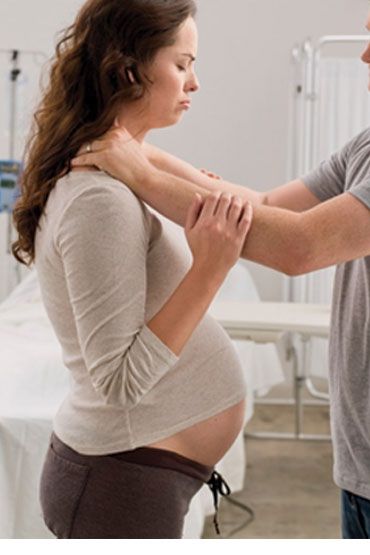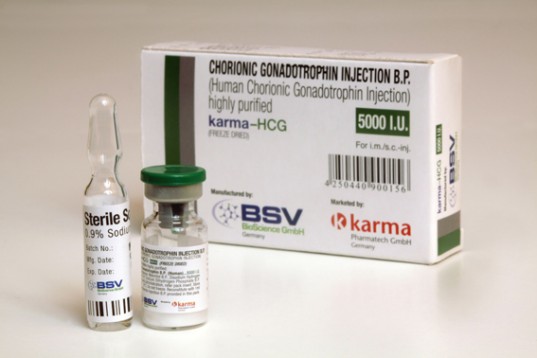Pregnancy on first try
Just how likely is it?
Some people get pregnant within the first month, but this is not always the case. Getting pregnant can take up to a year or longer.
Conception in the first month occurs for about 30% of people attempting pregnancy.
Successful conception rates tend to decrease steadily after the first month of actively trying to conceive. However, many healthy people without fertility issues could expect to become pregnant by the end of the first year.
This article examines how long it may take to become pregnant. We also look at what may affect fertility, as well as available fertility treatments.
According to the Centers for Disease Control and Prevention (CDC), the vast majority of people trying to conceive will become pregnant within the first year. They also define infertility depending on the age of the person:
- In people younger than 35 years, infertility is not becoming pregnant after 1 year of unprotected sex.
- In people 35 years and older, infertility is not conceiving after 6 months of unprotected sex.
According to infertility research, the likelihood of getting pregnant in the first month is around 30%. For people without fertility issues, the approximate chances of conception are:
- 75% after 6 months
- 90% after a year
- 95% at 2 years
The time it takes to conceive varies between people. For some, conception occurs in the first couple of months of unprotected sex. Others may have trouble getting pregnant and need help from a healthcare professional.
Approximately 1 in 8 people aged 15–44 years have difficulties trying to conceive or carrying a pregnancy to their due date. People who are not pregnant within 1 year should talk to their doctor for advice.
There are several reasons that people may find conception difficult, such as:
- an issue with sperm health
- problems with ovulation
- their age
- abnormalities in uterus shape
- a blockage of one or both fallopian tubes
- stress
- unexplained infertility
The American Society for Reproductive Medicine add that egg quality and quantity can also affect fertility and the likelihood that someone will conceive.
People can take steps to increase their chances of getting pregnant, including:
- maintaining a moderate weight, including not being underweight
- eating a healthful diet
- taking prenatal vitamins to help with fetal development
- tracking periods and ovulation
- getting tested for sexually transmitted infections, which can cause reduced fertility
- getting a Pap smear
- quitting smoking tobacco or marijuana
- talking with a doctor about medication side effects that may affect sperm count or quality
- avoiding heat and toxic chemicals, which can cause issues with sperm
- having sexual intercourse at the right time of the month, starting around day 10 of the egg cycle and then every other day up until ovulation
People with regular menstrual cycles are more likely to get pregnant than those with irregular menstrual cycles. This is because people with irregular periods may not ovulate regularly. During irregular cycles, ovulation could occur any time between 9–21 days into the ovulation cycle.
People usually see a doctor after 1 year of attempting to get pregnant. They can also see a healthcare professional earlier if they have concerns about their fertility.
There are several fertility treatments a person can discuss with their doctor. Before starting treatment, people will usually undergo tests and assessments, including:
- an overall health assessment
- hormonal balance test
- ovarian function test
- thyroid function test
- prolactin level test
- testing for metabolic conditions
- an examination of the uterus and fallopian tubes
- anti-müllerian hormone test
Treating any abnormalities can help improve a person’s fertility.
A doctor may also recommend having sperm analysis. Analyzing sperm can help determine if conception issues are due to sperm count or quality.
Low-cost fertility treatments may include:
- losing or gaining weight
- ovulation induction (OI), a medication that induces the release of an egg
- intrauterine insemination, which can take place alongside OI
- superovulation treatment, which stimulates the release of two to four eggs
Other fertility treatments doctors may discuss include:
- in vitro fertilization
- controlled ovarian hyperstimulation
- surgical correction of any problems with reproductive organs
People should talk to their doctor if they have trouble conceiving:
- after 1 year for people under 35 years
- after 6 months for people 35 years and older
A person may consider talking to their doctor sooner if they follow the relevant recommendations but still have difficulties conceiving.
A healthcare professional can help determine if any biological issues could be causing a fertility problem. They can recommend treatments to correct certain underlying health conditions that may be causing low fertility. They can also discuss and recommend fertility treatments.
Every person will have a different experience when trying to conceive. Some will get pregnant quickly, while others may conceive within a year or struggle with conception.
People struggling to conceive should talk to their doctor about their concerns. A healthcare professional could recommend solutions to fertility issues.
For some individuals, getting pregnant in the first month of trying is possible. Many people will conceive within the first year of having unprotected sex.
A person can increase their chance of pregnancy by tracking their ovulation cycle and maintaining a healthful weight and lifestyle.
If someone has trouble conceiving, they should talk to their doctor about possible causes and treatments.
How Long It Really Takes to Get Pregnant
Scientific data
One study, published in the journal Human Reproduction, followed women who were trying to get pregnant by having sex at the time in their monthly cycle when they were believed to be most fertile. Of the 346 women in the study, 310 conceived in the first year. The breakdown was like this:
38 percent were pregnant after 1 month.
68 percent were pregnant after 3 months.
81 percent were pregnant after 6 months.
92 percent were pregnant after 12 months.
In their conclusion, the researchers wrote, “Most couples conceive within six cycles with timed intercourse.” After a year of trying without conceiving, experts say you should see a fertility specialist.
Not-so scientific data
We decided to take this (very excellent) question to moms and moms-to-be on The Bump Facebook page. (Keep in mind that these aren’t the most reliable results, seeing that if they’re our friends on Facebook, they’re more likely to have gotten pregnant, period. But at least it gives you a real-life example.) This is what they said:
But at least it gives you a real-life example.) This is what they said:
34 percent of those who were trying were pregnant in the 1st month.
23 percent got pregnant in 1 to 3 months.
8 percent got pregnant in 3 to 6 months.
10 percent got pregnant in 6 to 12 months.
8 percent got pregnant in 1 to 2 years.
16 percent took more than 2 years to get pregnant.
1 percent tried but never conceived.
Reasons why
“With my son, we tried for seven months with no luck. I broke down and bought the Clearblue Easy Fertility Monitor, and it worked in the first month.” — calgal1683
“For my first son, it was two and a half years, and he was a complete miracle. We were told that the chances of us conceiving naturally were less than 1 percent.” _— kellyloveszach _
“I got off the Pill in August after we got married and just let nature take its course. We got very lucky and it happened on our first try.” — runnergrl6675
“We weren’t actively trying, or charting, but we weren’t trying to prevent either. If it happened, it happened. It only took us six weeks from the first time we had sex completely birth-control- and condom-free.” — sunset+skies
If it happened, it happened. It only took us six weeks from the first time we had sex completely birth-control- and condom-free.” — sunset+skies
“This pregnancy, I got my BFP on the ninth month trying to conceive. My husband and I were shocked because we anticipated it taking a full year again. With my daughter, it was 13 cycles before I got pregnant.” — EmmysMom08
“I finished my last pack of birth control pills in the month of April. We started trying to conceive in May, and I got pregnant in the fifth month of trying. I used an ovulation predictor kit after the third month of trying, and I’m glad I did because it helped me realize that I ovulate later in the month than is considered traditional.” — march3008
“I was ovulating 18 days after we got married, and that happened to be the day we got pregnant. We are so very blessed.” — wkfouts
“I got pregnant in the first month of trying. We were completely shocked because my first child took 11 months to conceive and my second child took a year to conceive. ” — Baby4OT
” — Baby4OT
Get pregnant faster
Want to up your chances of getting pregnant faster? Follow these steps:
• Learn the most effective timing for conception.
• Find out how to test your basal body temperature.
• Naturally boost your fertility using these strategies.
• Prep your brain and body for pregnancy.
Please note: The Bump and the materials and information it contains are not intended to, and do not constitute, medical or other health advice or diagnosis and should not be used as such. You should always consult with a qualified physician or health professional about your specific circumstances.
Plus, more from The Bump:
Getting Pregnant Checklist
Fertility 101
Sex Ed for Babymaking
Top 10 mistakes when trying to get pregnant
Services
Virtual tour. Clinic "ARNIKA"
There are times when doctors did not reveal any abnormalities in you and your partner, but the long-awaited pregnancy still does not occur. And it already seems to you that this is not a natural phenomenon, but the real magic of luck and genetics. For some, pregnancy happens "from the first time", while others turn their lives into a real nightmare.
And it already seems to you that this is not a natural phenomenon, but the real magic of luck and genetics. For some, pregnancy happens "from the first time", while others turn their lives into a real nightmare.
It's all about making similar mistakes, we tell you about the most common of them.
Mistake #1⃣: Worrying too much
Chances are you have at least one friend who, when she became pregnant, said, "It happened exactly at the moment when I stopped thinking about it." It's annoying, frustrating, and nerve-wracking, especially when all you want to do is have a baby. Stress can be one of the main reasons you can't get pregnant: high levels of the stress hormone cortisol can negatively impact fertility. Relax and try to let go of the situation for a while. Stop planning your pregnancy so much and remind yourself every day that this is a miracle that actually happens very, very often.
Mistake #2⃣: Doing Too Much/Little
If you're going to do this, do it right! Many couples believe that if you "save" sperm and do not have sex for a week, then the chances of conception will increase significantly. This is not true. After about a week of abstinence, sperm motility is markedly reduced. For successful conception, doctors recommend having sex every day or every other day for a week up to and including the day of ovulation. In addition, having regular sex has been proven to help regulate your cycle: your partner's body releases hormones that affect your reproductive system, so having regular sex increases the production of estrogen.
This is not true. After about a week of abstinence, sperm motility is markedly reduced. For successful conception, doctors recommend having sex every day or every other day for a week up to and including the day of ovulation. In addition, having regular sex has been proven to help regulate your cycle: your partner's body releases hormones that affect your reproductive system, so having regular sex increases the production of estrogen.
Mistake #3⃣: Use questionable practices
It would seem that the 21st century is in the yard, but many women still continue to believe in the miraculous power of douching. Sperm in such an environment dies and cannot fertilize the egg, which is why many people use a weak solution of soda to make the environment alkaline and create favorable conditions for conception. But doctors are opposed to this method: soda kills not only harmful microorganisms, but also beneficial ones, thus violating the natural pH of the vagina.
Mistake #4⃣: Blaming Yourself
Speaking of infertility, we tend to think that the problem is on the part of the woman. But in fact, the responsibility lies equally on both partners. Doctors say that in 40% of cases of infertility, the cause must be sought on the part of the man, in another 40% - on the part of the woman. The remaining 20% is compatibility, a combination of both partners. But do not panic ahead of time. Remember that it takes 6 months to a year for a healthy couple to successfully conceive.
But in fact, the responsibility lies equally on both partners. Doctors say that in 40% of cases of infertility, the cause must be sought on the part of the man, in another 40% - on the part of the woman. The remaining 20% is compatibility, a combination of both partners. But do not panic ahead of time. Remember that it takes 6 months to a year for a healthy couple to successfully conceive.
Mistake #5⃣: Miscalculating
The most common mistake is the incorrect determination of the day of ovulation. Another common mistake is not counting the beginning of the cycle from the first day of menstruation. The first day of your period is when you bleed. Not the day before, not the day after. For successful conception, the bill goes literally to the clock, which is why it is so important to know the exact day the cycle began.
Mistake #6⃣: Living on a schedule
No matter how hard you try, pregnancy is impossible to plan. As mentioned above, it takes a healthy couple from 6 months to a year to conceive. But many women need half a year just to normalize their cycle after they stop taking contraceptives. Ovulation will not occur until the cycle becomes regular. Therefore, if after 6 months your cycle has not returned to normal or you are not sure that you are ovulating, it is worth visiting a doctor.
But many women need half a year just to normalize their cycle after they stop taking contraceptives. Ovulation will not occur until the cycle becomes regular. Therefore, if after 6 months your cycle has not returned to normal or you are not sure that you are ovulating, it is worth visiting a doctor.
Mistake #7⃣: Hurry
No one knows why so many people are sarcastic about the statement that after intercourse it is advisable to lie on your back with your buttocks slightly raised for about 20 minutes. Doctors unanimously claim that this method increases the possibility of conception by as much as 80%! Therefore, if you want to dance a victory dance after a successful conception, as you think, refrain - at least for 20 minutes.
Mistake #8⃣: Ignoring your “crazy” worries
Maybe you have always had an irregular cycle and because of this you are having difficulty conceiving. Or perhaps you have diabetes and want to make sure everything is under control before you get pregnant. Consulting a specialist does not mean being paranoid! There are situations in which you should not ignore your worries: here you are thinking not only about yourself, but also about your unborn child. If you have any questions or worries, it is better to immediately find a specialist who will explain everything and tell you about the pitfalls that you may encounter specifically on your way. Thus, if you encounter difficulties in trying to get pregnant, you will already be ready for them.
Consulting a specialist does not mean being paranoid! There are situations in which you should not ignore your worries: here you are thinking not only about yourself, but also about your unborn child. If you have any questions or worries, it is better to immediately find a specialist who will explain everything and tell you about the pitfalls that you may encounter specifically on your way. Thus, if you encounter difficulties in trying to get pregnant, you will already be ready for them.
Mistake #9⃣: Not giving up bad habits
A lot has already been said on this topic, but it will still not be superfluous to repeat: it is necessary to give up bad habits at least a year before trying to get pregnant. Why do women continue to drink alcohol and smoke, knowing how detrimental this affects the ability to conceive? Doctors around the world warn: the first trimester is the most important in the formation of the child's body. There is no such amount of alcohol that would be safe for him.
Mistake #10 Forgetting about his health
What is bad for your fertility can also be bad for your partner's ability to conceive. Cigarettes, alcohol, unbalanced diet - all this negatively affects the quality and quantity of sperm. Sperm is completely renewed in 3 months, so your partner should give up bad habits at least for this time. Make sure that he consumes enough nutrients, selenium, vitamins E and C - they are especially useful for men.
Fomin's clinic - a network of multidisciplinary clinics
If pregnancy does not occur within six months of active sexual life, then this is one of the signs of infertility. But don't panic. This does not mean at all that you have infertility, perhaps it is enough for you, for example, to adjust your diet. Second, infertility is treated. Well, you should not immediately cheat yourself on the subject of IVF. Remember, infertility is not the same as IVF.
Infertility is a diagnosis that 10% of women all over the world have to live with: according to statistics, every fourth married couple is infertile. In this article we will talk about what female infertility is, how to live with it and whether it can be overcome.
In this article we will talk about what female infertility is, how to live with it and whether it can be overcome.
Female infertility is a diagnosis made after a year of unsuccessful attempts to have children, subject to regular sex with a partner without contraception. If a woman is older than 35 years, the diagnosis is made faster - after 6 months. After 35 years, the ability to conceive gradually decreases, so older women should not delay treatment.
However, one should not rush to sad conclusions either. According to statistics, even completely healthy couples under the age of 30 manage to conceive a child in the first three months only in 20-37% of cases. At the same time, after six months, pregnancy occurs already in 80% of couples. Until a year has passed from the first attempt, there is no need to worry, be examined, and even more so, to be treated.
Pregnancy depends on many reasons - in order for the stars to “align” and all the factors to coincide, sometimes it takes some time.
For example, it is known that the easiest way to get pregnant is to make love 3-4 times a week. But a break of more than 5 days can adversely affect the quality of spermatozoa.
In addition, a lot depends on the lifestyle of parents - stress and heavy workload reduce fertility in both men and women. It's no surprise that many successful pregnancies have started during family vacations.
If less than 6-12 months have passed since the first attempt, you can try several “life hacks”:
Choose the best time to conceive. According to some reports, the day of ovulation and 2-3 days before it are best suited for conception. To find out when ovulation occurs, a urinary express test for luteinizing hormone will help - a day or two before ovulation it will become positive. However, calculating the optimal time is not always the best option.
I always oppose the calculation of the optimal time for conception, because because of this, sex begins on a schedule in a couple's life, and this is one continuous stress. It seems to me that it is more reasonable to have sex 2-3 times a week during the entire cycle.
It seems to me that it is more reasonable to have sex 2-3 times a week during the entire cycle.
Kosolapova Inna Vladimirovna, gynecologist-reproductologist of the Fomina Clinic, chief physician
Do not use lubricants. Water-based, oil-based and silicone-based lubricants reduce sperm survival. But lubricants based on hydroxyethylcellulose have less effect on sperm survival - so if there is a lack of lubrication, you can continue to use them.
Stop dieting. Good nutrition is the key to a successful pregnancy. But don't overeat either. There is evidence that a body mass index (BMI) of 19 is ideal for pregnancy.-thirty. In women who have a BMI greater or less, the time to conception increases.
You can calculate your BMI manually by dividing your weight by your height squared. Alternatively, you can use the built-in calculator on the website of the medical organization, or download a special application.
Quit smoking and alcohol. Smoking increases the risk of infertility by 1. 6 times. It is also better not to abuse alcohol - eat more than 20 grams of ethanol per day, the risks of "earning" infertility increase by 60%.
6 times. It is also better not to abuse alcohol - eat more than 20 grams of ethanol per day, the risks of "earning" infertility increase by 60%.
On the other hand, the position of the body during sex, based on the available data, does not affect the result in any way. The "missionary" position is suitable for conception just like any other.
If more than a year has passed and nothing helps, it's time to see a doctor. The diagnosis of "infertility" has the right to make only an obstetrician-gynecologist (reproductologist).
It is important to understand that infertility is not only a woman's problem. According to statistics, in the absence of children in a third of cases, the mother is “to blame”, in a third - the father, and in another third of cases the cause of infertility cannot be established. This means that with the diagnosis of "infertility" it is necessary to examine both partners.
Male infertility is diagnosed by a urologist/andrologist. But if you go to a family planning center, a reproductologist can make a diagnosis.
Most often, female infertility is associated with problems in the reproductive system: in the ovaries, fallopian (or fallopian) tubes, through which the egg passes from the ovaries to the uterus, and in the uterus itself. To figure out what exactly “broke down” in the female reproductive system, the doctor will collect an anamnesis, carefully examine the patient and prescribe tests. We talk more about this in the article "Diagnostics of female infertility".
Infertility is treated, and quite successfully — according to statistics, after diagnosis and therapy, children appear in 50% of women (without the use of assisted reproductive technologies: IVF, etc.). On the other hand, success depends on many factors, from the age and history of previous pregnancies to problems with the partner's sperm. Many factors influence the possibility of getting pregnant, so it can be difficult to predict the result.
If the problem is overweight or underweight, it is often enough to normalize the weight for a successful pregnancy. True, much more often the problem is associated with sex hormones - in this situation, the doctor will select the appropriate medication. And if the problem is in the obstruction of the fallopian tubes or in the uterus itself, surgery may be required.
True, much more often the problem is associated with sex hormones - in this situation, the doctor will select the appropriate medication. And if the problem is in the obstruction of the fallopian tubes or in the uterus itself, surgery may be required.
In vitro fertilization (IVF) is available for patients for whom these treatments are not suitable or have not worked.
The essence of IVF is that the patient's ovaries are stimulated with the help of hormones, then the egg is taken and fertilized with the husband's sperm, then the embryo is "grown" in a special incubator for some time and transplanted into the mother's uterus. A baby is born in the same way as other children conceived "naturally".
In Russia, the IVF procedure can be done free of charge under the MHI policy. However, it is important to understand that this is a complex treatment method that requires serious preparation and gives the best result until the age of 40-45. It is difficult to predict how successful IVF will be. According to statistics, the procedure ends with the birth of a live and healthy baby in about 27% of cases.
According to statistics, the procedure ends with the birth of a live and healthy baby in about 27% of cases.
At the same time, IVF success rates vary greatly not only in different countries, but also in different clinics in the same city. There are clinics in which in 30-40% of cases it is possible to achieve a positive result on the first try.
Very often, mothers are concerned about possible health problems that may occur in children conceived through IVF. But in recent times there has been much less cause for concern than 20 years ago.
When the method was just created, all viable embryos that were obtained after fertilization were placed in the uterus of mothers “just in case”. If everyone took root, the mother often gave birth to twins or triplets, and sometimes “quadruples”. It is much harder to bear several children than one - and after all, mothers already had problems with pregnancy, otherwise IVF would simply not have been required.
Today, the goal of the procedure is the birth of one healthy baby, so mothers transfer only one, maximum two of the best embryos.












